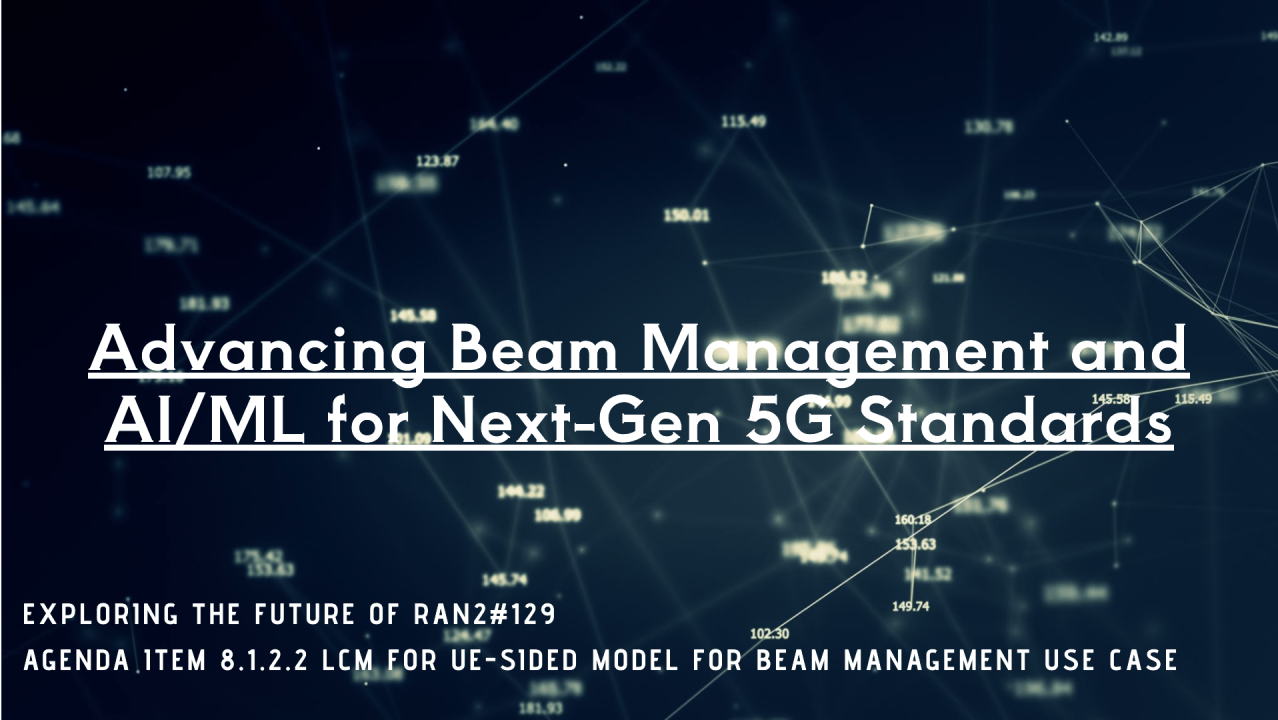Executive Summary
Hello everyone! I’m excited to share some insights into the upcoming RAN2#129 meeting, explicitly focusing on agenda item 8.1.2.2. This article provides an overview of the major technical areas, contributor trends, and historical progress related to this important topic. We’ll delve into the five major technical areas up for discussion, highlight leading contributors, and explore how AI-powered tools like Proposal Zone can streamline the proposal review process. Let’s get started!
Anticipation for RAN2#129 (Agenda Item 8.1.2.2)
Since RAN #105, the integration of AI/ML has been a game-changer for 5G standards, significantly enhancing beam management, positioning, and feedback mechanisms. As we approach RAN2#129 (linked here: https://portal.3gpp.org/Home.aspx#/meeting?MtgId=60585), the 262 proposals submitted under agenda item 8.1.2.2 (LCM for UE-sided model for Beam Management use case) underscore the need for an efficient review process. This will allow us, as delegates, to focus on the most impactful discussions in this rapidly evolving 5G landscape.
Five Technical Areas for Discussion
Based on an in-depth analysis of mapped proposal data, RAN2#129 proposals are structured into 5 key technical topics (Lv1) with 10 subcategories (Lv2), shaping the agenda item 8.1.2.2 discussions.
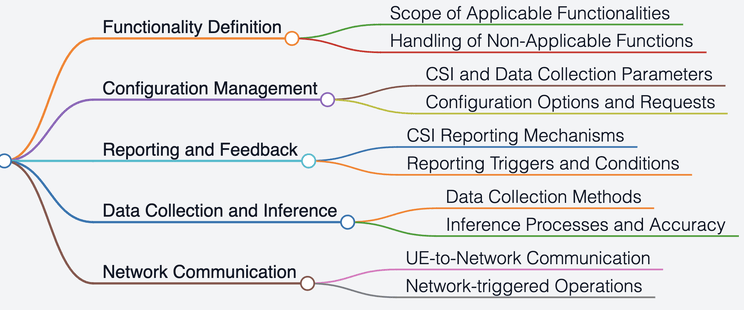
- Functionality Definition (122 Proposals) Focus on defining applicable functionalities, managing state transitions, and optimizing UE-network interactions.
- Configuration Management (103 Proposals) Refining CSI configurations, dynamic adjustments, and efficient parameter management for network adaptability.
- Reporting and Feedback (15 Proposals) Improving CSI reporting, event-triggered reporting, and optimizing reporting conditions.
- Network Communication (12 Proposals) Optimizing UE-to-network communication, managing network-triggered operations, and improving coordination.
- Data Collection and Inference (10 Proposals) Enhancing data collection, AI/ML training, and inference accuracy for better decision-making.
This structured categorization streamlines proposal review, reducing redundancy and helping RAN2 delegates focus on impactful discussions.

Technical Insights in Detail
- Emphasis on CSI and Data Collection: A significant number of proposals (101) under CSI and Data Collection Parameters highlight the push for refined CSI reporting and AI-driven optimizations, which aim to enhance network intelligence and adaptability.
- Focus on Functional Applicability: The high volume of proposals (83 proposals) in Scope of Applicable Functionalities underscores the need for standardized applicability reporting, ensuring seamless UE-network interactions and reducing inconsistencies.
- Broader Discussions Across Multiple Areas: While these two categories dominate, proposals also cover Handling of Non-Applicable Functions, CSI Reporting Mechanisms, Data Collection Methods, and Network Communication. These discussions ensure a well-rounded approach to refining network adaptability, efficiency, and functionality.
With these focus areas shaping RAN2#129, delegates should prioritize discussions here to drive impactful contributions and establish clear standardization paths.
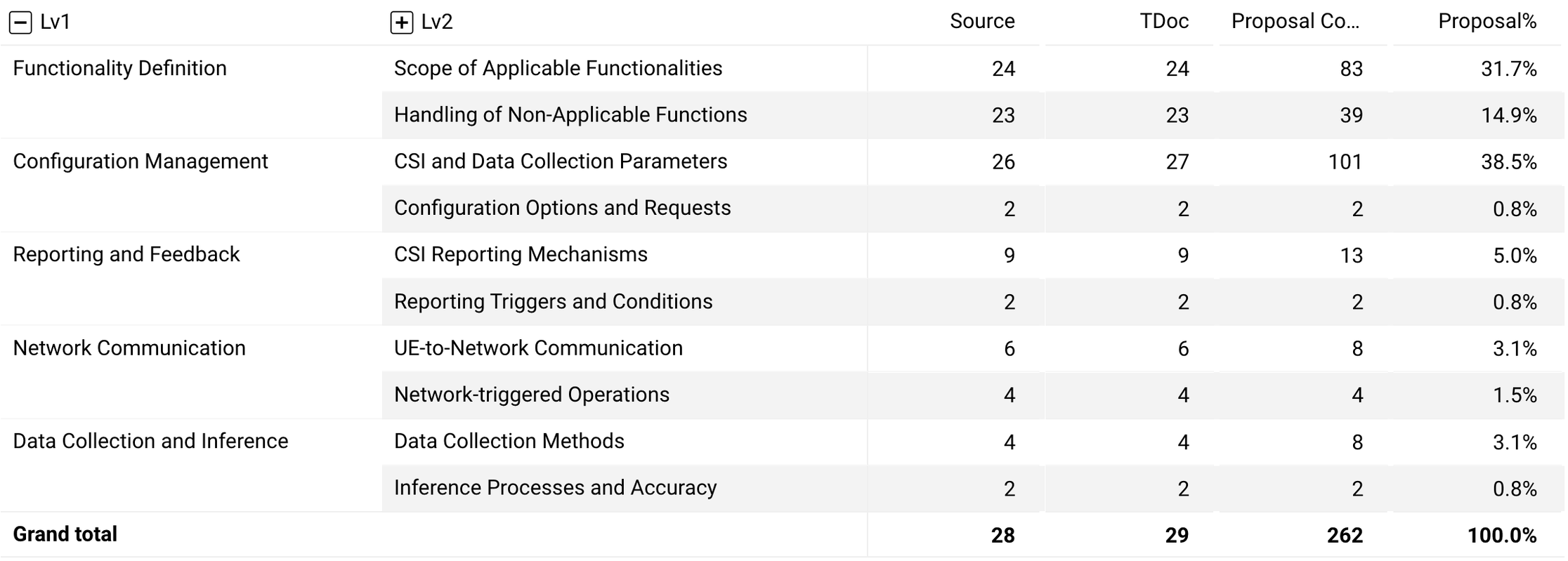
Progress from Past RAN2 Meetings
Significant contributions were made under Agenda Item 8.1.2.2 at RAN2#127, RAN2#127b, and RAN2#128, with promising further advancements.
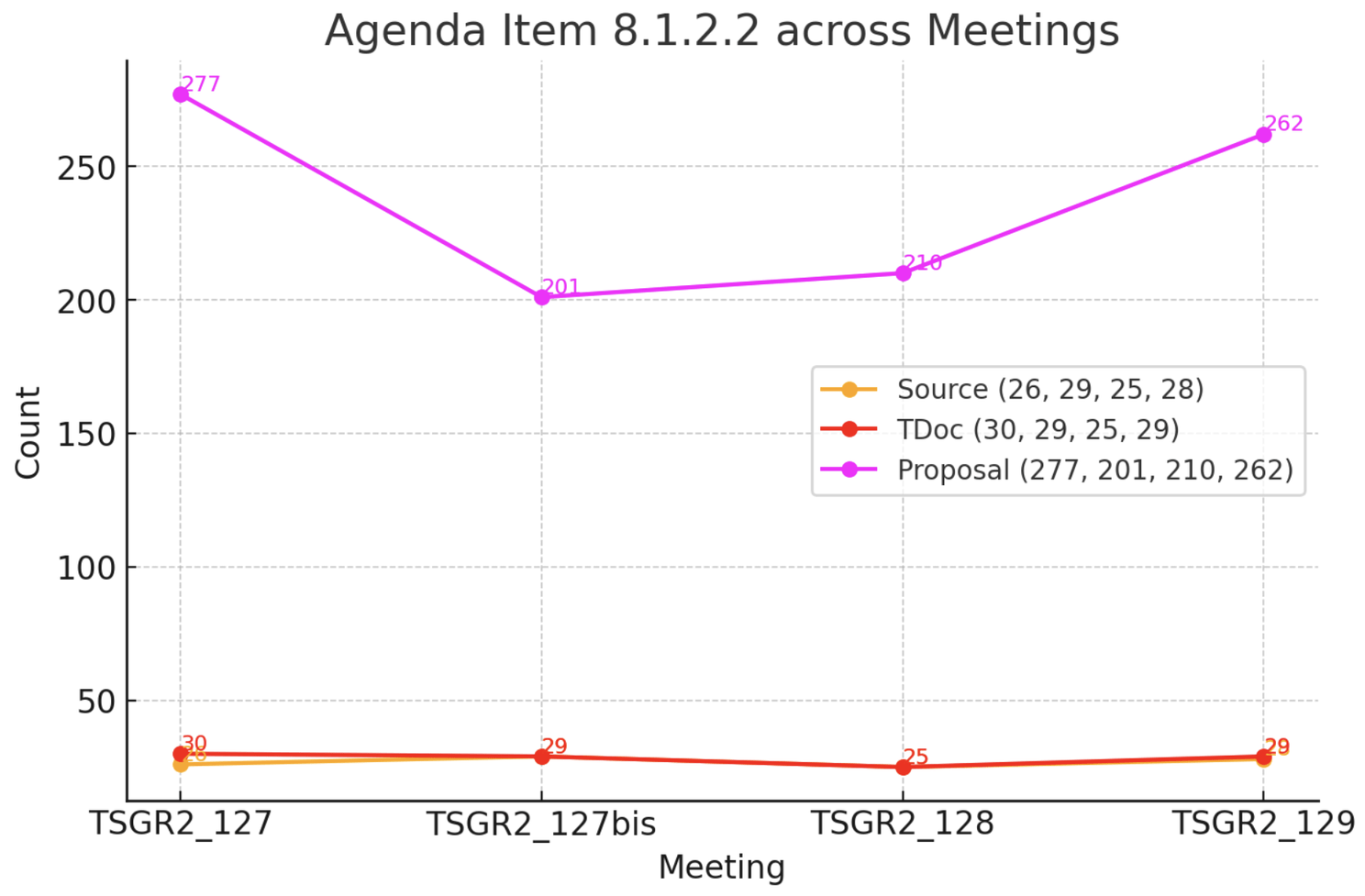
RAN2 delegates made significant progress on Agenda Item 8.1.2.2 in previous meetings (RAN2#127, RAN2#127b, and RAN2#128). RAN2#128 saw important agreements (see detail from Meeting Report) that laid the foundation for discussions at RAN2#129. These include:
- UE Applicability Reporting: UE reports functionality changes (non-applicable to applicable) via UAI, while the network is responsible for deactivating non-applicable functionalities upon receiving UE reports.
- Handover Applicability Reporting: UE supports applicability reporting during handover using the same RRC procedure within a cell, with the target gNB handling conditions and configurations.
- Data Collection Control: The network controls data collection initiation, configurations, and UE requests, with the potential for UE indication if data collection is not feasible.
These agreements set the stage for RAN2#129 discussions, where delegates will focus on refining network-controlled processes, enhancing UE-side reporting mechanisms, and ensuring alignment with the evolving 5G ecosystem.
Now, let’s return to RAN2#129 to discover some leading contributors and their strategy focus from their proposals.
Leading Proposal Contributors
- OPPO: 19 proposals, leading contributions.
- CATT, Nokia, vivo: 16+ each.
- Remaining 24 Contributors: Averaging 8 proposals each. These numbers underscore the role of significant contributors in shaping standards.
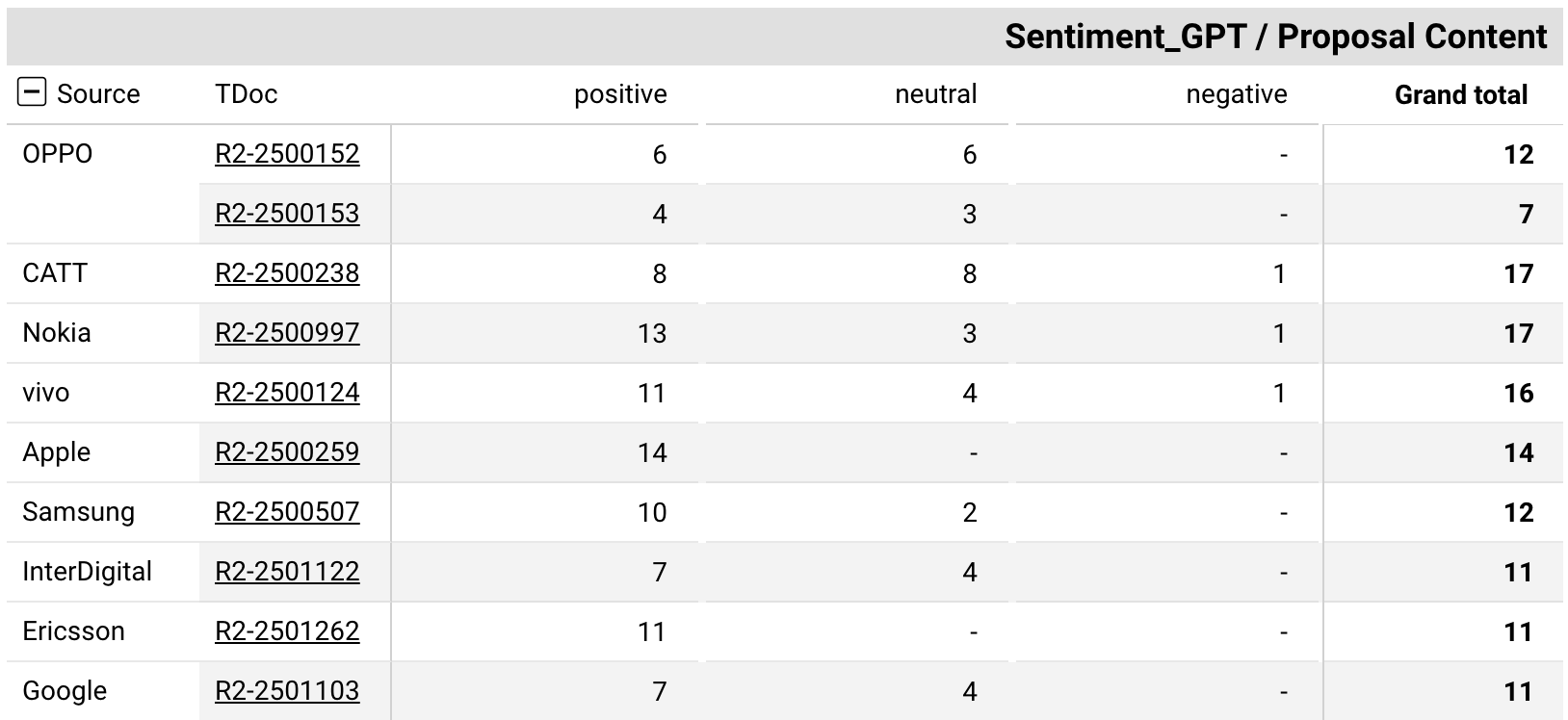
Influencing Future Standards
- Apple’s Contributions: Emphasis on CSI and Data Collection Parameters.
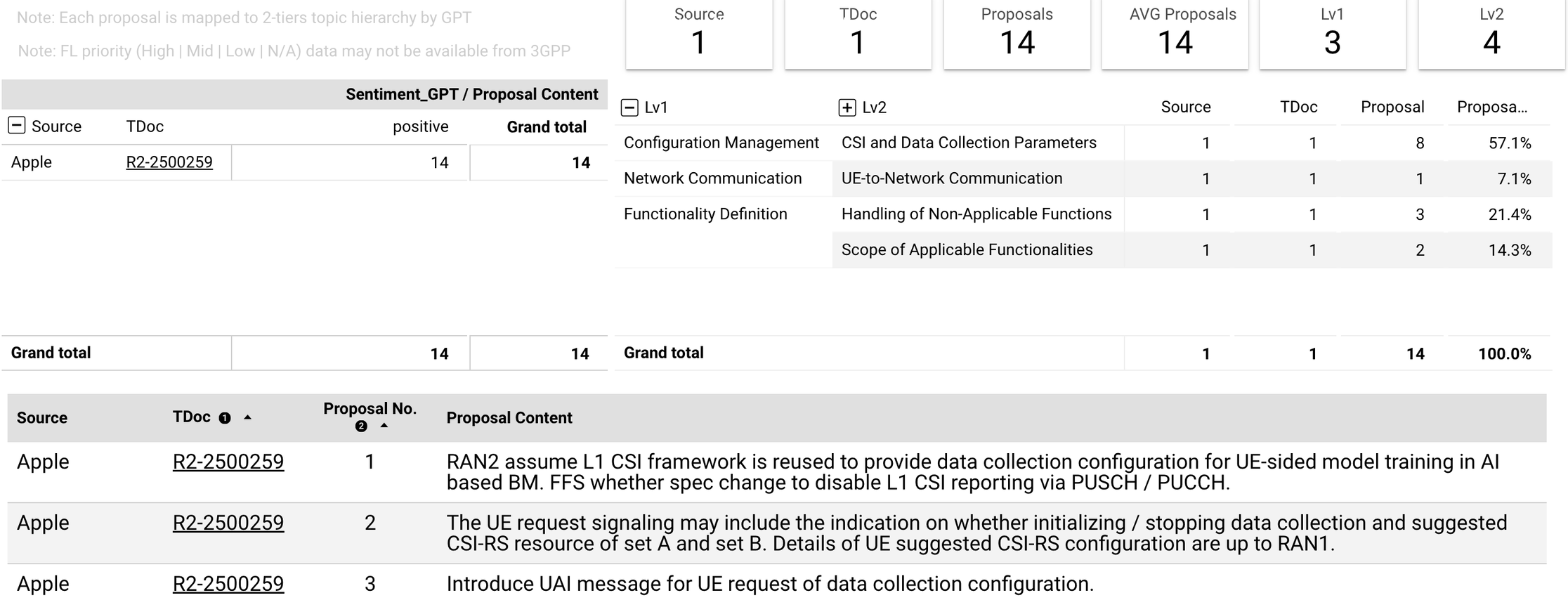
- Samsung’s Focus: 8 of 12 proposals also relates to CSI and Data Collection Parameters.
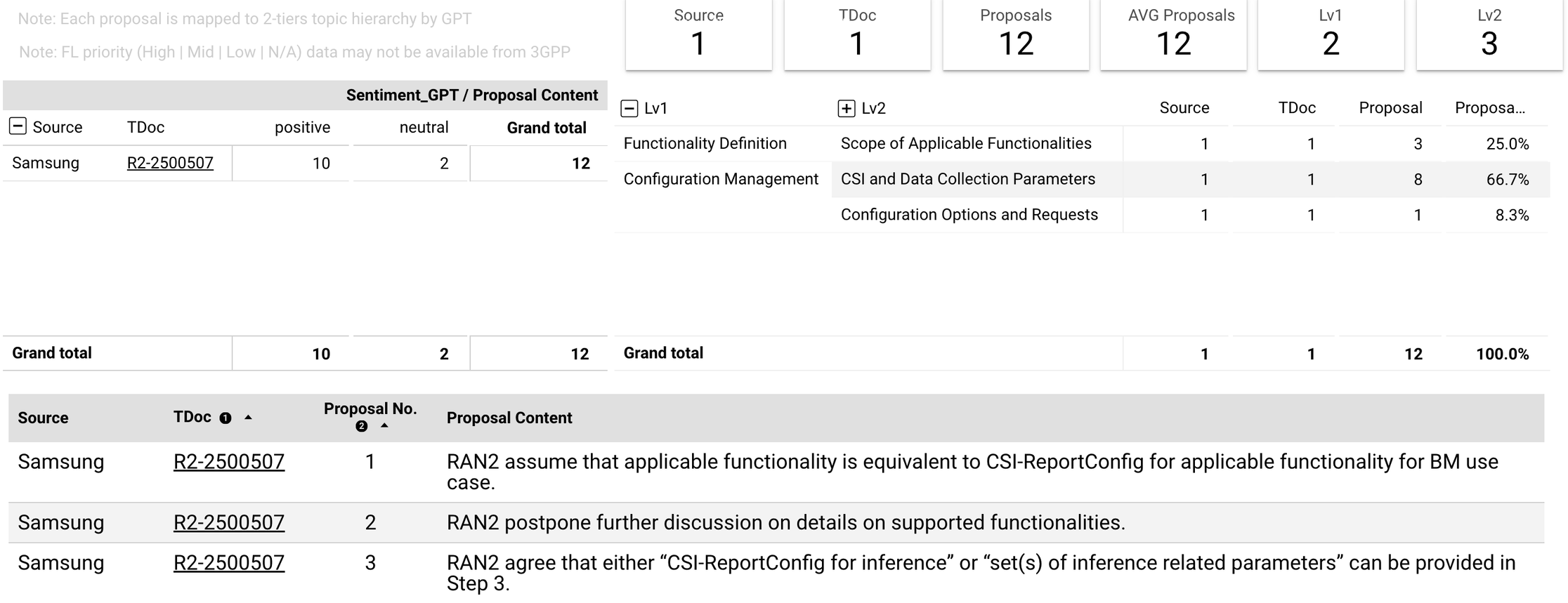
- InterDigital’s 11 proposals span Scope of Applicable Functionalities and Handling of Non-Applicable Functions, showcasing a diverse focus.
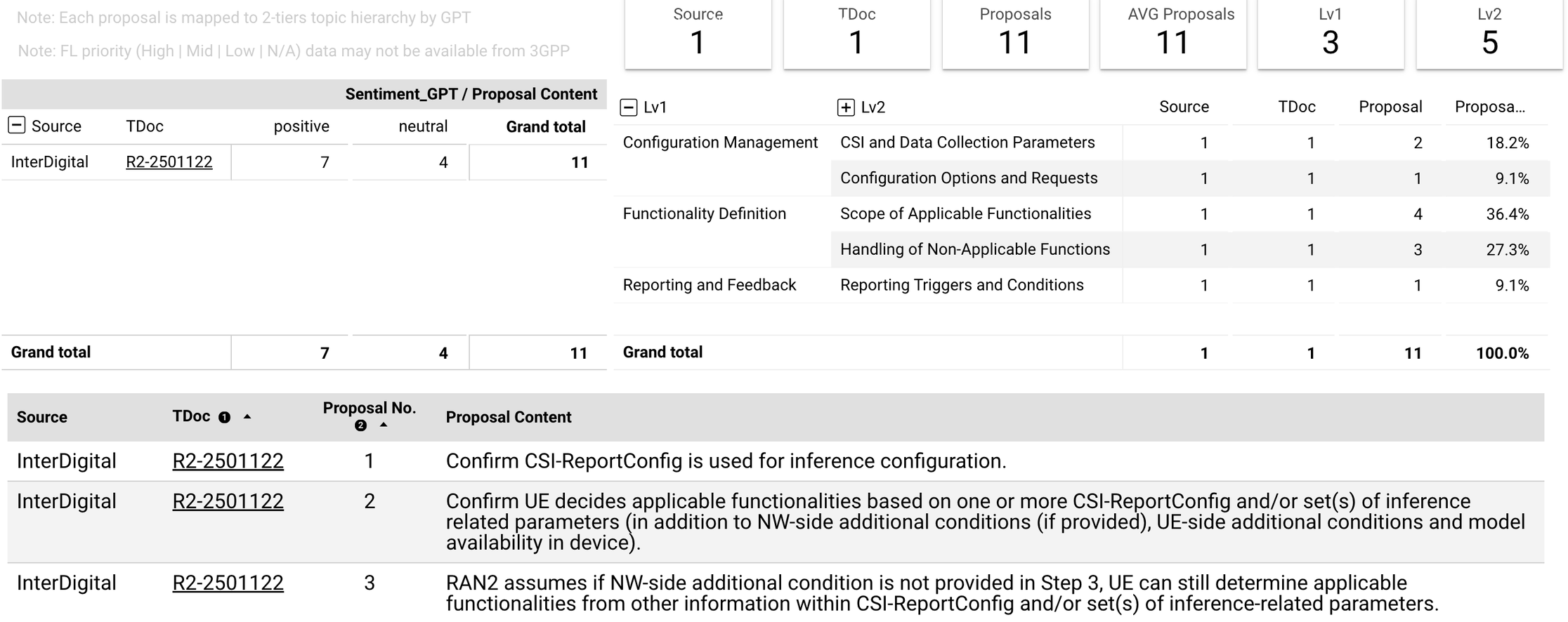
This mix of specialization and diversity reflects strategic approaches within the standardization process.
Differing Opinions
Differing opinions are crucial because they ensure rigorous debate, challenge assumptions, and produce more robust, well-rounded standards that reflect diverse perspectives.
Seven proposals from Mediatek, Xiaomi, CATT, Nokia, vivo, and TCL reflect differing opinions on certain features, contributing to a balanced, rigorous standardization discussion.
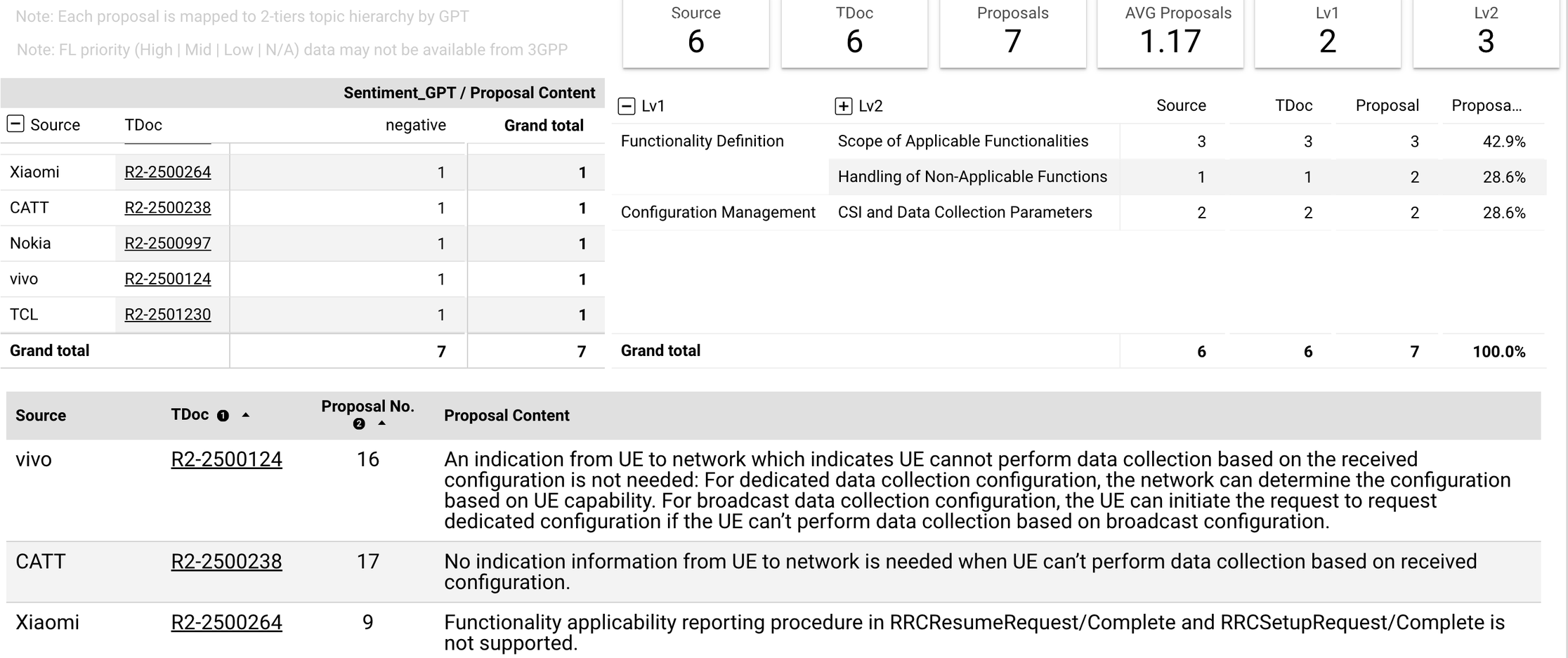
The Workload Challenge & Proposal Zone
With 262 proposals submitted, RAN2 delegates must efficiently navigate vast technical discussions. Reviewing each proposal manually is traditional but time-consuming, making AI-powered insights critical.
Proposal Zone: AI-Powered Efficiency
Proposal Zone, part of the Standard Impact Extractor (SIE), simplifies proposal analysis by:
- Filtering proposals by agenda item for faster review.
- Providing summaries and sentiment insights to enhance decision-making.
- Highlighting allies and competitors, offering strategic positioning for discussions.
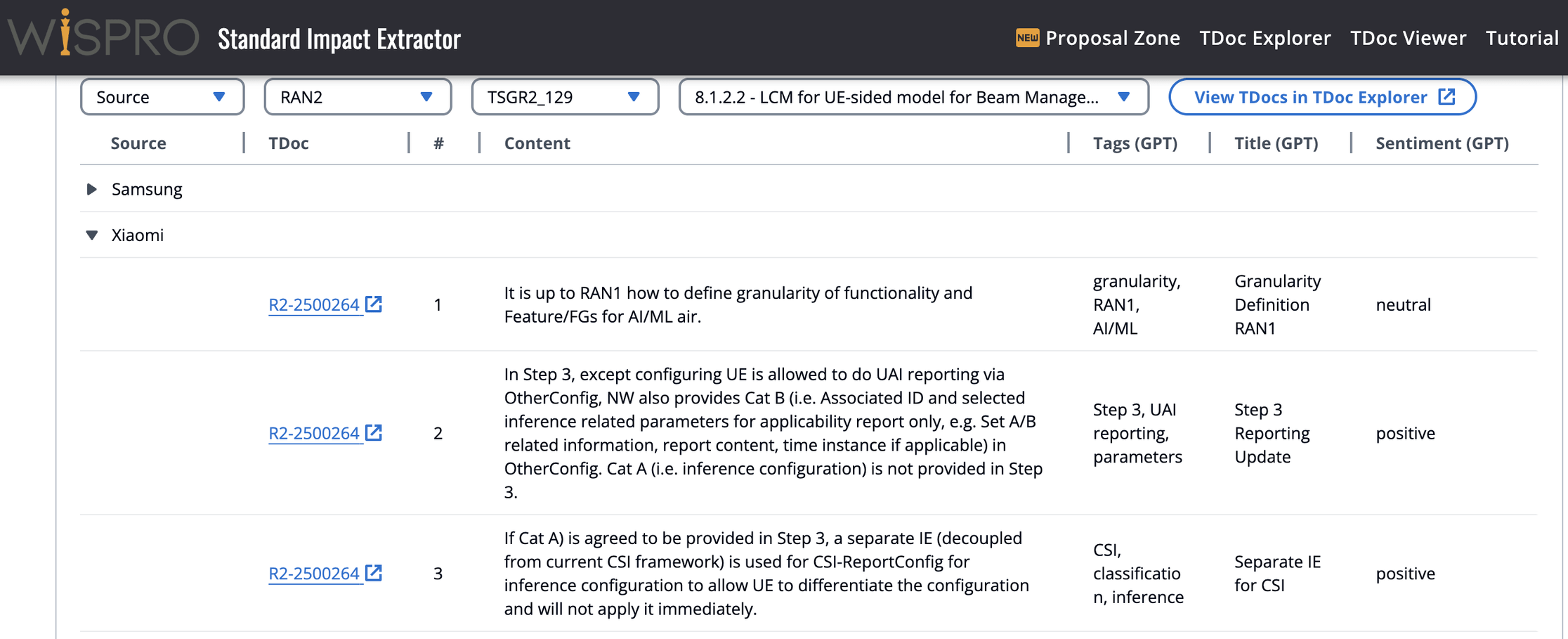
Proposal Zone can significantly reduce the manual effort required for evaluation, allowing you to focus on strategic discussions. Visit https://ixi.wispro.com to learn more.
Let’s Shape the Future Standards Together!
As RAN2#129 approaches, having the right insights and tools is critical to shaping future standards for enhancing Beam Management and AI/ML LCM. If you’re interested in trying our upcoming interactive dashboards or have ideas for new features to help 3GPP delegates and feature leads, let’s connect—comment below or message me directly.
The original article is from https://www.linkedin.com/pulse/inside-ran2129-beam-management-aiml-advances-jackson-chia-shen-lin--z8nhc/.
For earlier insights relates to agenda item 8.1.2.2 (LCM for UE-sided model for Beam Management use case) in RAN2 meetings, check out the previous articles below:
- “Pioneering 5G Standards: Inside the Latest on Beam Management and AI/ML LCM at RAN2#128” (published Nov. 13, 2024)
- “Shaping the Future of AI/ML in 5G Standards at RAN2#127-bis for 3GPP RAN2 Delegates” (published Oct. 10, 2024).
